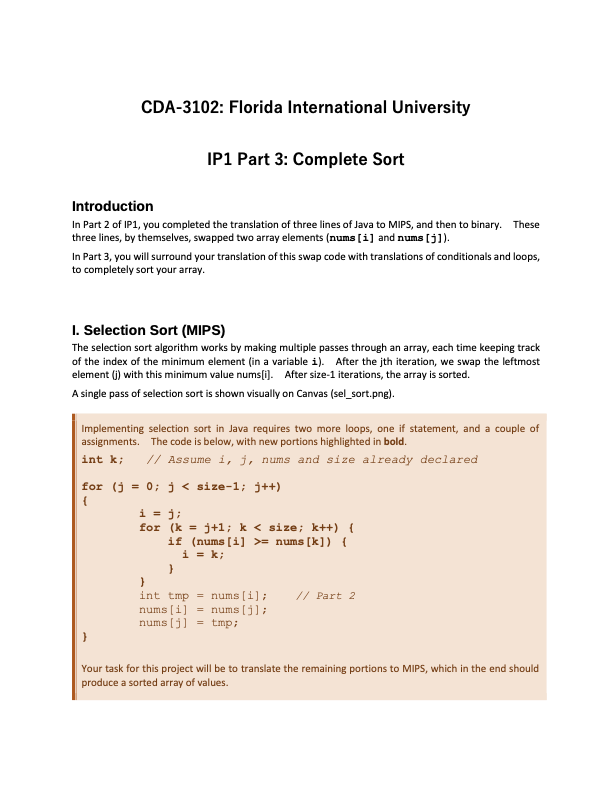Answered step by step
Verified Expert Solution
Question
1 Approved Answer
CDA-3102: Florida International University IP1 Part 3: Complete Sort Introduction In Part 2 of IP1, you completed the translation of three lines of Java to

Step by Step Solution
There are 3 Steps involved in it
Step: 1

Get Instant Access to Expert-Tailored Solutions
See step-by-step solutions with expert insights and AI powered tools for academic success
Step: 2

Step: 3

Ace Your Homework with AI
Get the answers you need in no time with our AI-driven, step-by-step assistance
Get Started


